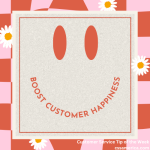It’s not what you said…it’s how you said it.
If you’ve ever had someone say this to you, raise your hand. (I just raised my hand)
Usually this is being said when someone is upset with you, but regardless of the reason, that phrase illustrates that HOW we say something often impacts the other person as much or more as WHAT words are used.
So, let’s use this truth to our advantage. Confidence in customer service is an important discussion because we’re trying to instill confidence in the other person about what’s being shared. The more they are confident in what we share, the more they’ll take our guidance, the more comfortable they will feel. And the more confident they are in what we share, the less likely they’ll ask more questions, the less likely they’ll “answer shop.”
Here are some tips to instill confidence beyond the words you use:
- Convey Calmness – Unless you’re going the enthusiasm route, exude a certain confidence by conveying calmness in your hand movements and their position when talking.
- Use Brevity – Don’t drone on when a simple “Yes” is the real answer.
- Add Some Inflection – Have variability in your tone when you want to ensure that your statement comes across like it’s from the heart, not from a script.
- Avoid the Long Pauses – The “umms” and “uhhs” convey indecision and lack of certainty. If you are unsure of an answer momentarily, restate the question back to them to buy yourself some time, then directly move to the answer.
- Complement Your Words with Your Body Language – Nod when saying something affirmative. Offer eye contact to show your intent on your answer and your customer. Maintain good posture to show you’re assured of yourself and your statements.
To deliver great customer service, you not only need to have the right knowledge of your customer, policies, procedures, and products, but you need to confidently convey that information.
Master Confidence in Customer Service.
Signup for FREE Tips! Contact Us More Resources for You Visit Our Home Page
























